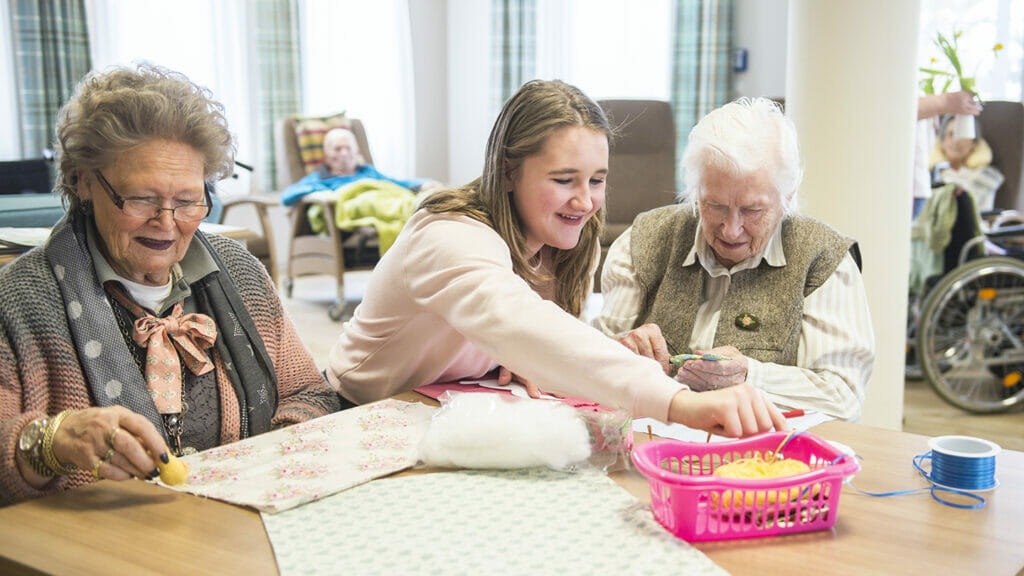

Live-in intergenerational programs can help improve community well-being and resident resilience, not to mention combat ageist stereotypes, according to the results of a new study.
University of Sydney, Australia, researchers published the results of a pilot study recently in the journal Aging & Mental Health about the effects and practicality of allied health students living at a residential aged care facility.
The study involved an occupational therapy-coordinated intergenerational live-in student program wherein four allied health students lived alongside residents with dementia at Calvary Ryde Retirement Community in Sydney, which offers memory care, independent living and respite care. A similar program was offered at Calvary Nazareth Retirement Community through the University of Newcastle.
Through interviews with residents, staff members, community management and student volunteers, the investigators found that the live-intergenerational program had a positive effect on health outcomes among residents, including promoting wellness and their approach to aging well. Both student and resident participants called the experience positive, and many developed meaningful relationships as a result.
The study also highlighted new dimensions in person-centered care. The pilot showed that a “community of care” could be sustained with the support of live-in students by creating a sense of shared belonging and promoting a social approach for aging well. For residents, the pilot offered companionship and reduced isolation, whereas the students gained a deeper understanding of and respect for the older generation.
Intergenerational programming in senior living
Other senior living providers have implemented intergenerational programming that has benefited all participants.
For instance, Vincentian Schenley Gardens, a Pittsburgh personal care home, similarly is operating an intergenerational living program that mixes older adult residents with students of the city’s Chatham University School of Health Sciences. The goal of that program is to alleviate loneliness for residents and provide mentorship for college students.
The program was modeled after a similar nearby program at Terrace Place at Vincentian in North Hills, which houses La Roche University students on its independent living campus.
And Presbyterian Village North in Dallas, a Forefront Living community, has supported intergenerational assisted living, allowing generations of families to live in the same community.
Other projects, such as at The Stories in Rockville, MD, or Norterre in Liberty, MO, have combined housing for older adults, younger adults and families with retail and services.
Senior living communities also are being built on or near college campuses, or providing opportunities for graduate students to live on senior living community campuses as artists-in-residence.
And places such as Pillars of Prospect Park in Minneapolis has housed both older adults and college students while also providing child care. The program launched in 2022 to allow college students to rent apartments within the community. In exchange, the students commit to interacting with the older adult residents and to participate in planned activities.
The authors of the Australian study noted that senior living residents in general have reduced access to and opportunities for participation in meaningful activities, which can lead to increased social isolation and disengagement. Raising awareness about the benefits of intergenerational housing can be helpful to individuals and communities looking for different ways to counteract loneliness in aging, they said.


